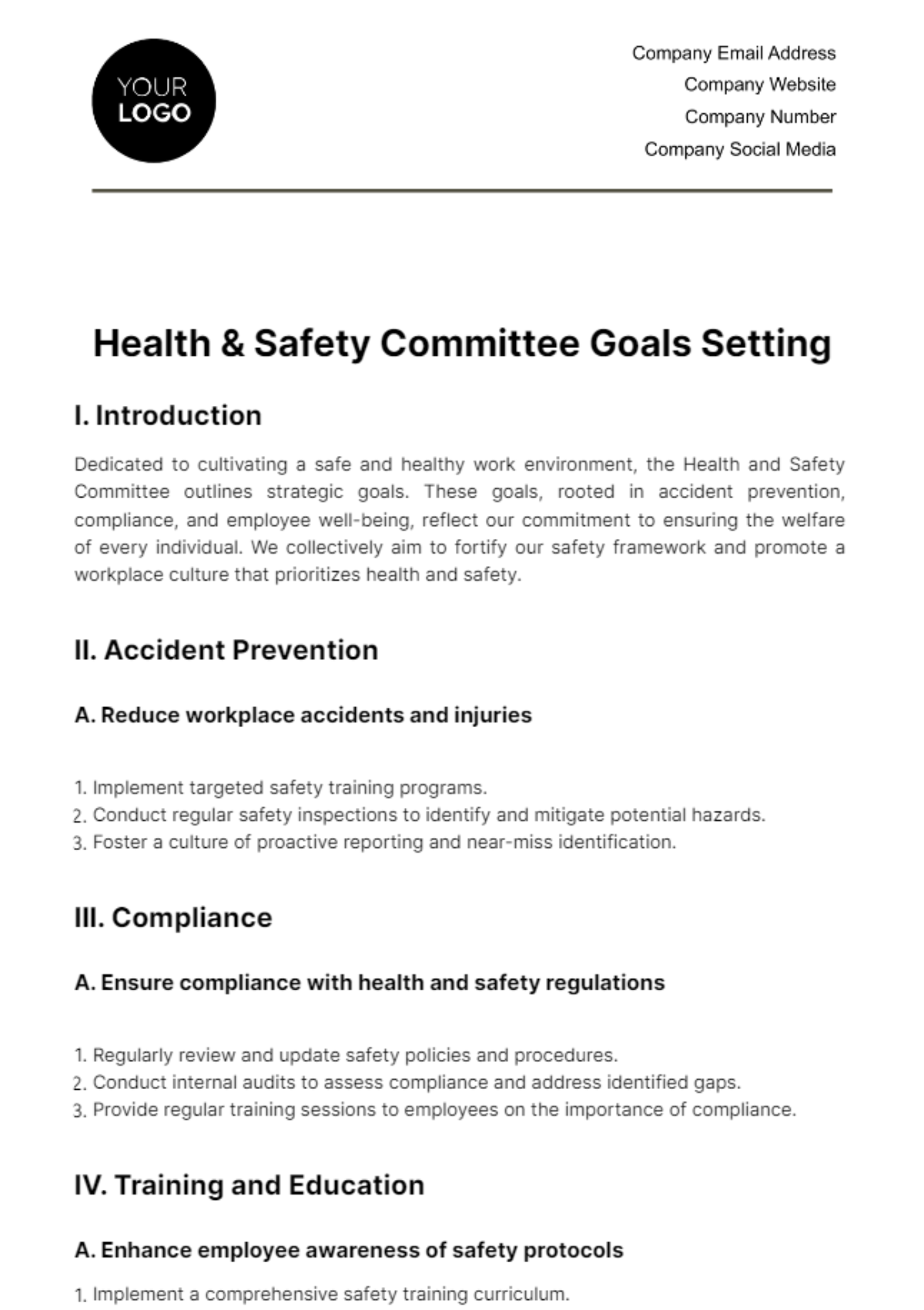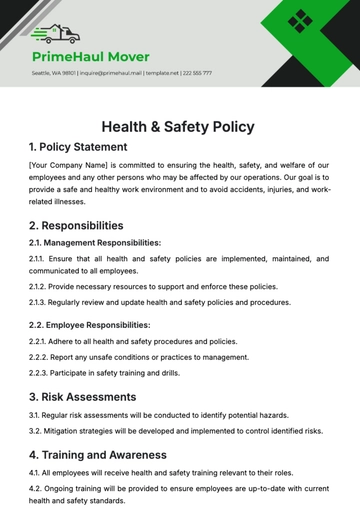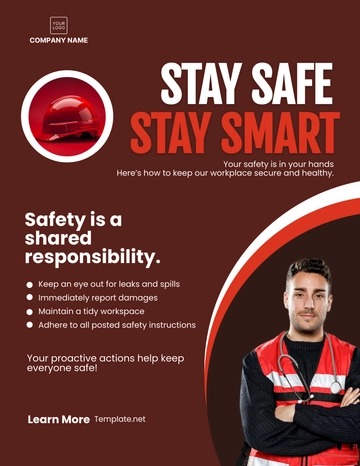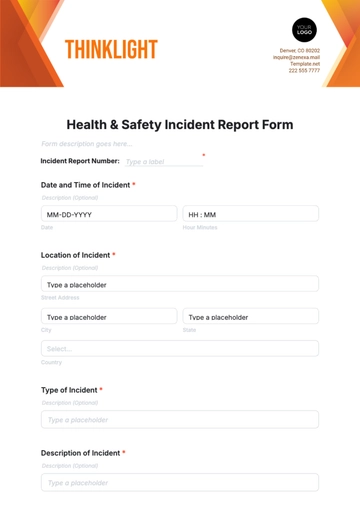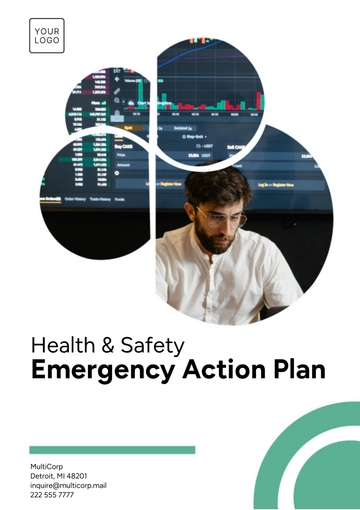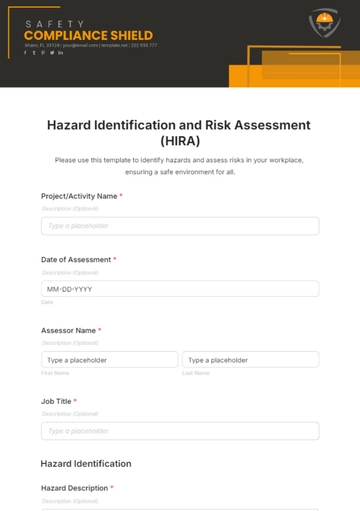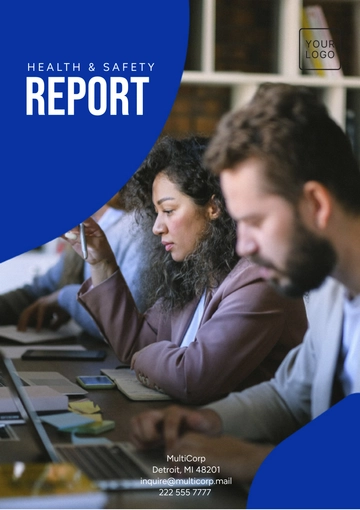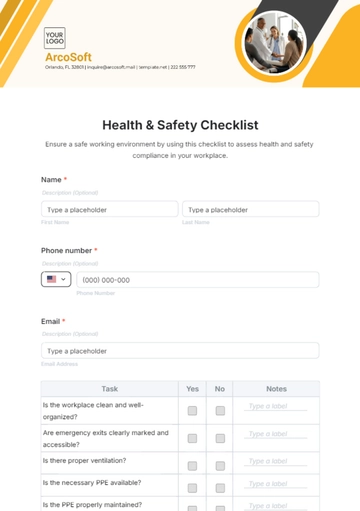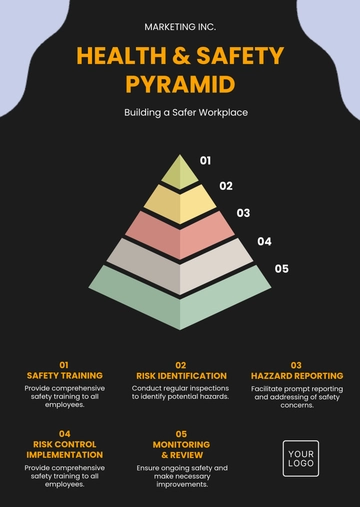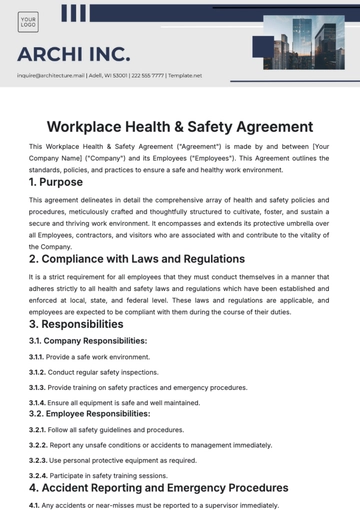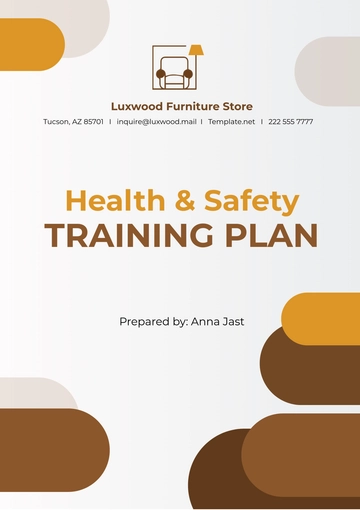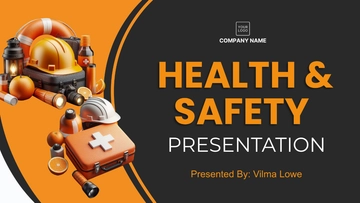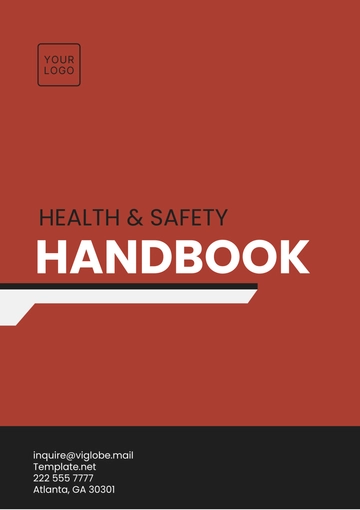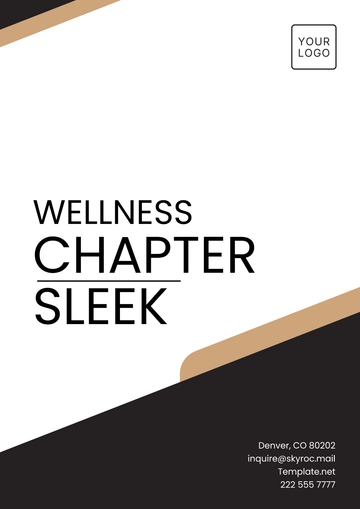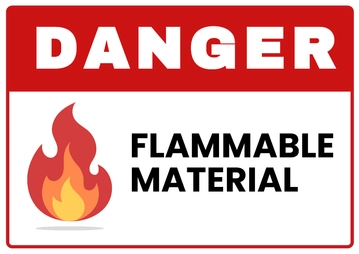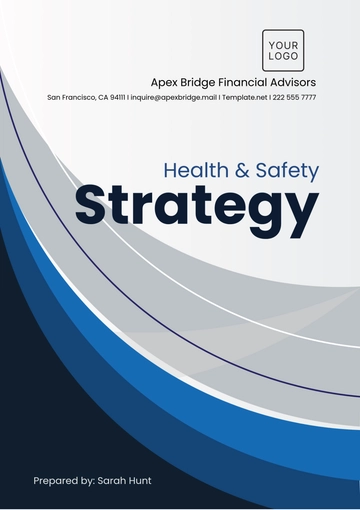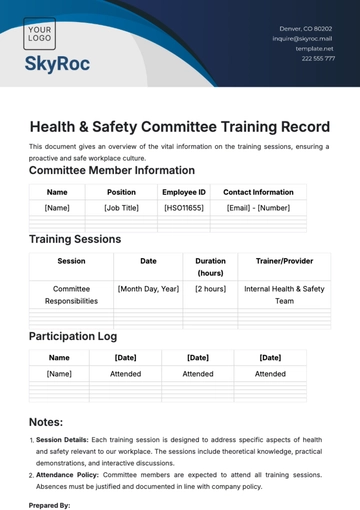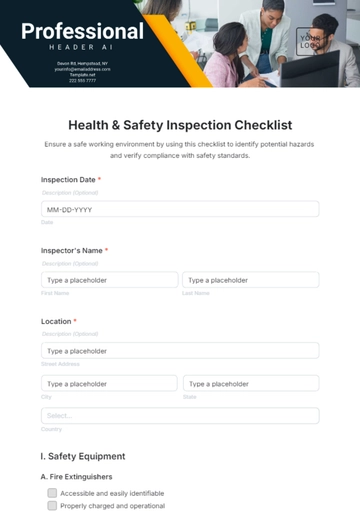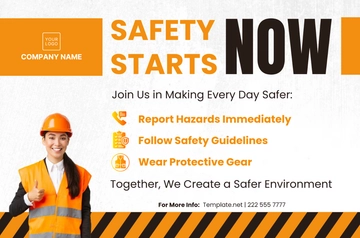Health & Safety Committee Goals Setting
I. Introduction
Dedicated to cultivating a safe and healthy work environment, the Health and Safety Committee outlines strategic goals. These goals, rooted in accident prevention, compliance, and employee well-being, reflect our commitment to ensuring the welfare of every individual. We collectively aim to fortify our safety framework and promote a workplace culture that prioritizes health and safety.
II. Accident Prevention
A. Reduce workplace accidents and injuries
Implement targeted safety training programs.
Conduct regular safety inspections to identify and mitigate potential hazards.
Foster a culture of proactive reporting and near-miss identification.
III. Compliance
A. Ensure compliance with health and safety regulations
Regularly review and update safety policies and procedures.
Conduct internal audits to assess compliance and address identified gaps.
Provide regular training sessions to employees on the importance of compliance.
IV. Training and Education
A. Enhance employee awareness of safety protocols
Implement a comprehensive safety training curriculum.
Provide regular refresher courses on key safety procedures.
Establish mentorship programs to facilitate knowledge transfer on safety best practices.
V. Emergency Preparedness
A. Establish effective emergency response plans
Conduct regular emergency drills to test employee readiness.
Review and update emergency plans based on lessons learned.
Create and distribute emergency response kits for each department.
VI. Hazard Identification and Risk Assessment
A. Conduct regular workplace inspections to address hazards
Implement a system for prompt hazard reporting.
Prioritize and address identified hazards to minimize risks.
Integrate hazard analysis tools to identify emerging risks proactively.
VII. Employee Involvement
A. Encourage active employee participation in safety initiatives
Establish channels for feedback and suggestions.
Recognize and reward employee contributions to safety improvements.
VIII. Health Promotion
A. Implement programs to promote employee health and well-being
Provide resources and support for wellness initiatives.
Address factors contributing to stress or health issues.
Introduce fitness challenges and wellness workshops.
IX. Incident Investigation
A. Develop a thorough incident investigation process
Conduct timely and comprehensive investigations for reported incidents.
Identify root causes and implement corrective actions.
Establish a lessons-learned database to share insights across departments.
X. Communication
A. Enhance communication channels related to health and safety matters
Implement regular safety meetings.
Utilize various communication tools to keep employees informed.
Launch a safety newsletter to share success stories and updates.
XI. Evaluation and Metrics
Establish KPIs for measuring safety program effectiveness
Regularly assess and analyze safety metrics.
Use data-driven insights to identify areas for improvement and success.
Conduct external benchmarking to compare safety performance.
XII. Crisis Management
A. Develop and maintain a comprehensive crisis management plan
Conduct periodic crisis simulations to evaluate plan effectiveness.
Ensure the committee is well-prepared to respond to unforeseen events.
Establish communication protocols for crisis situations.
XIII. Conclusion
These goals underscore our commitment to a workplace where safety is paramount. Through accident prevention, compliance, and employee well-being, we aim not only to meet regulatory standards but also to cultivate a culture that values health and safety.
Health & Safety Templates @ Template.net
